
Bf 110F-4 Night Fighter

The Bf 110 series is well documented so I'm not going to go into a protracted history here but instead will concentrate on the specific variant and how it may have differed from earlier variants. While history tends to paint the Bf 110 as a failure based on its performance in the Battle of Britain, it really wasn't the aircraft that was a failure but the concept of a heavy fighter that failed and it wasn't just Germany that found this out as the concept of a heavy fighter was popular among a number of countries during the late 30's. The Bf 110 was found to be useful in many roles and was in production and service for most of the war.
The Bf 110F which appeared slightly later than the "E" variant but was manufactured in parallel with,and took advantage of the availability of the DB 601 F engines rated at 1,350 h.p. for take off to obtain a much needed increase in power. Operational weights had steadily increased without any increase in power and for the first time since the introduction of the Bf 110C-1 the decline in performance was stopped and an overall improvement achieved. Early F-4's supplemented the fixed forward firing armament with two 30mm MK 108 cannon mounted in a ventral tray. During the summer of 1943 a number of F-4's had the ventral tray removed and the MK 108's moved to a "schrage Musik" arrangement. Another addition to the F-4 from late summer 1942 was the installation FuG 202 intercept radar. Designated Bf 110F-4a, it retained the four forward firing machine guns but the MG FF cannon were replaced by MG 151's. Production of the F-4a continued through much of 1943 until replaced by the DB 605 engined G-series.
The Kit
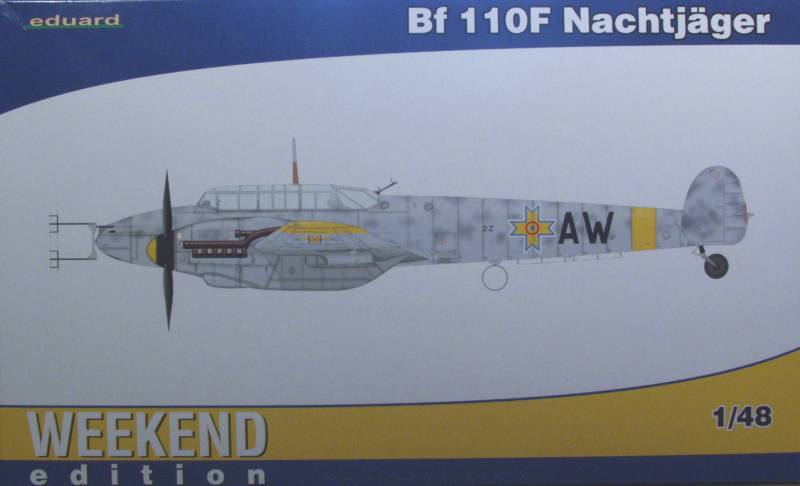
Back around 2007 Eduard began releasing a series of Bf 110s in 1/48 scale. It was apparent from the beginning that they intended to release a number of variants due to the number of unused parts on the sprues. As time went passed nearly every variant from the 100C on has been released. The kits were well received and very well molded and detailed as one can see by looking at the number of parts supplied. Early builders however found that while the kits in general fit together well there were some areas that didn't and mostly due to the design which allowed the builder to leave various things like the nose section that covers the machine guns there open. All well and good for those wanting them open but closing them lead to poor fit and a lot of complaining on many of the forums.
By the time the G variants some of the fit issues had supposedly been addressed but there is some debate about that and the kits will still challenge your skills a bit to build but you will end up with a very accurate and well detailed kit. Most of the variants have also been released in both the ProfiPack editions and Weekend editions. The ProfiPack editions include multiple aircraft in the decals and a color photo etch fret as well as precut masks for the canopy. The Weekend editions typically only have markings for one aircraft and no photo etch or masks. If you are going to end up buying masks and photo etch for the Weekend edition you are better off to buy the ProfiPack as you will save some money. If you look at the three Eduard kits I have reviewed in the 110 Series you will see most of the same sprues are provided. There are usually one or more added or left between the different versions and on some versions the parts not used on a given sprue may out number the parts that are used. If you build more than one of these kits you will end up with a lot of extra parts left over. With that out of the way lets look at the kit.
The Eduard kit comes in a moderately sized top open tray top box and it is quite packed with sprues. The kit is molded in Eduard's signature olive tan color and the sprues are divided between two large resealable plastic bags. The clear sprues, masks and photo etch frets are individually bagged. The parts are all very crisply molded and feature recessed panel lines, rivets and fasteners. The surface has a semi matte finish. A small amount of flash can be found on some parts. Mold alignment is good and mold separation lines are relatively light. Fabric surfaces are done with raised tape lines and no sag between supports. The rivets are so fine that many are likely to disappear if you get heavy handed with the paint. Looking over the air frame parts I did not see any obvious surface defects. Most of the ejector pin marks seem to be in out of sight areas but there may be a few you need to deal with.
From a detail standpoint this kit
is dressed to the nines. The cockpit will no doubt take up a good
portion of the build time even without the PE parts there are over 90
parts involved. Inn spite of the impressive number of parts
devoted to the cockpit, no radar receivers are included. Going by the
radar array on the nose, it should at least have a FuG 202 console
mounted above the main radio equipment. The
upper nose has a very detailed gun section but won't be seen except
for the ends of the gun barrels if you close it up. The gear bays are
moderately well detailed, the wheels are in halves and not weighted.
The control surfaces with the exception of the ailerons are all molded
in the neutral position. The kit does not come with engines or the
ability to open those areas.
The canopy is a multi part affair comprised of nine parts and can be assembled open or closed. Before assembling the wing halves on needs to open holes in the bottom wing depending on the markings you chose. A variety of under wing weapons are supplied, bombs in two sized, rocket tubes, and two different gun packs. The parts map shows a lot of parts not used, probably close to 100 but many of them are for the earlier models C, D, E and F. Because Eduard basically uses parts from earlier and later variants to make up this kit there are a few inaccuracies and these are well spelled out in the second reference link at the bottom of the page so I'm not going to duplicate it here.
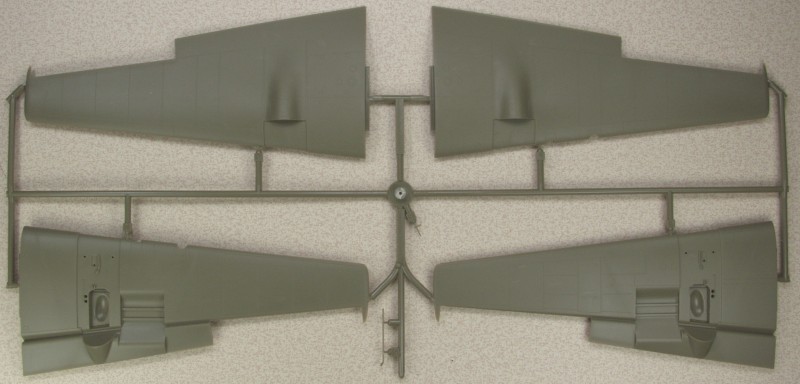
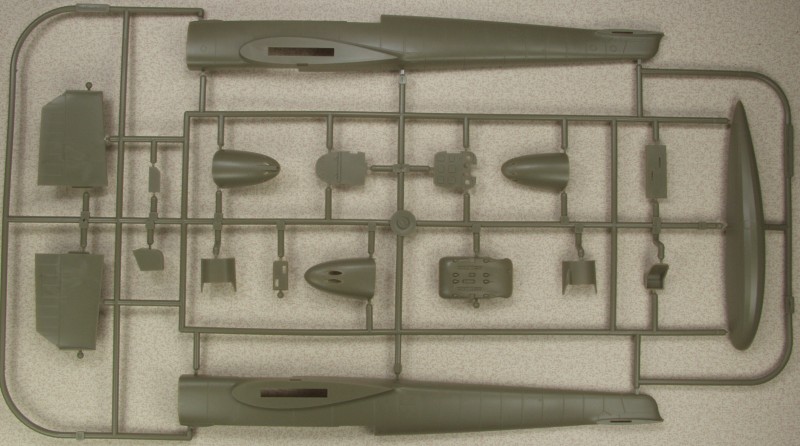
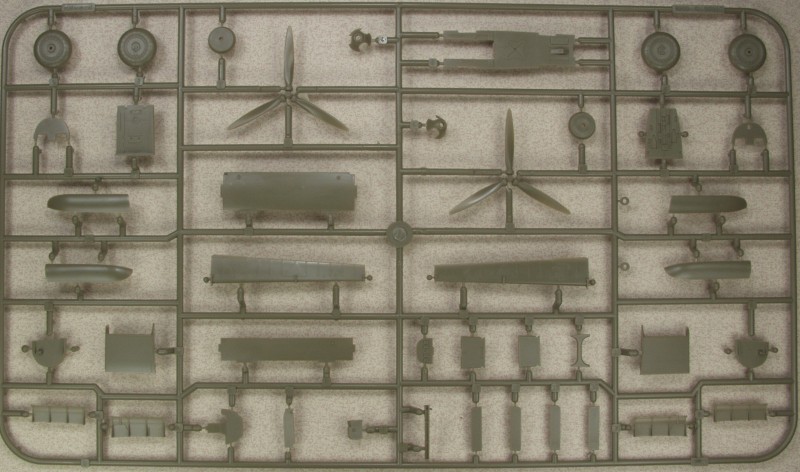
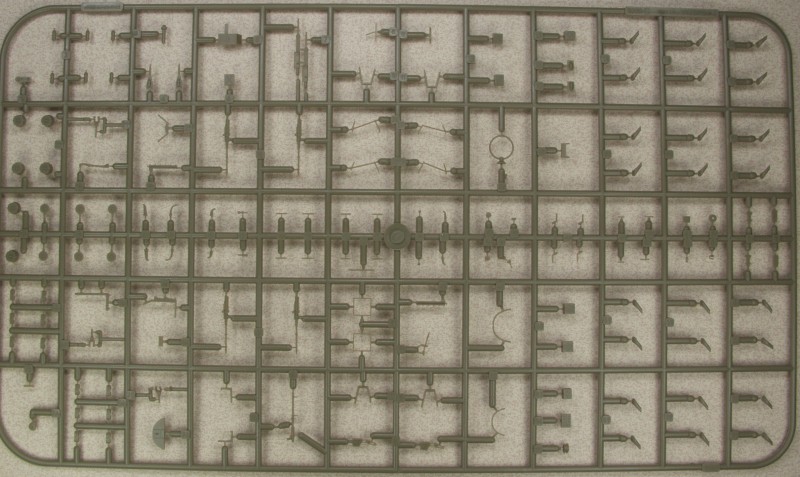
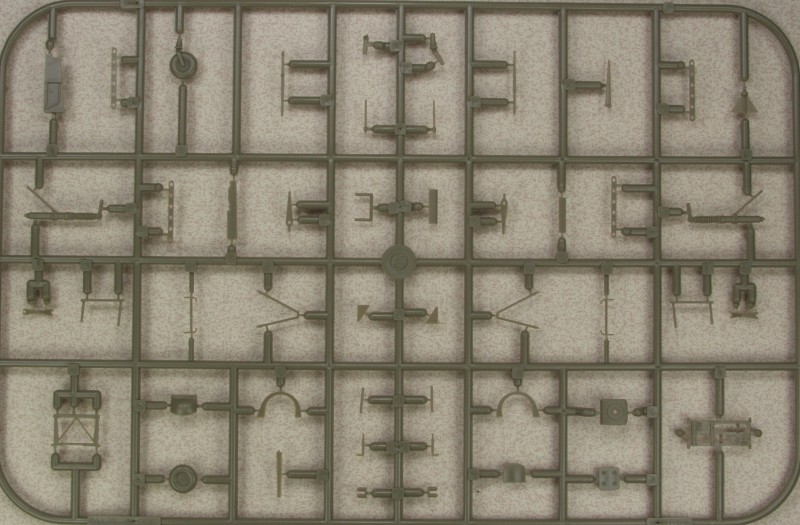
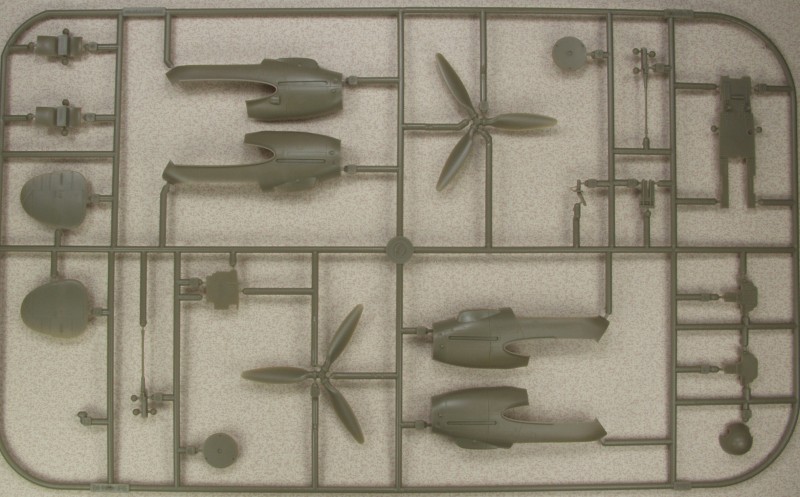
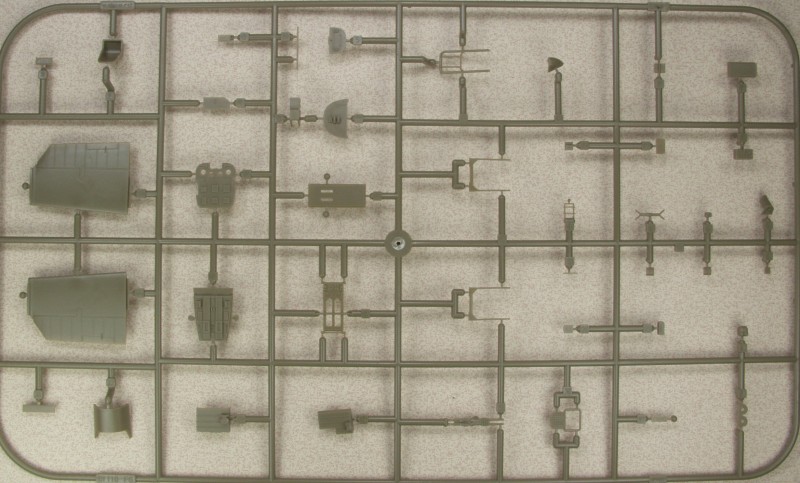
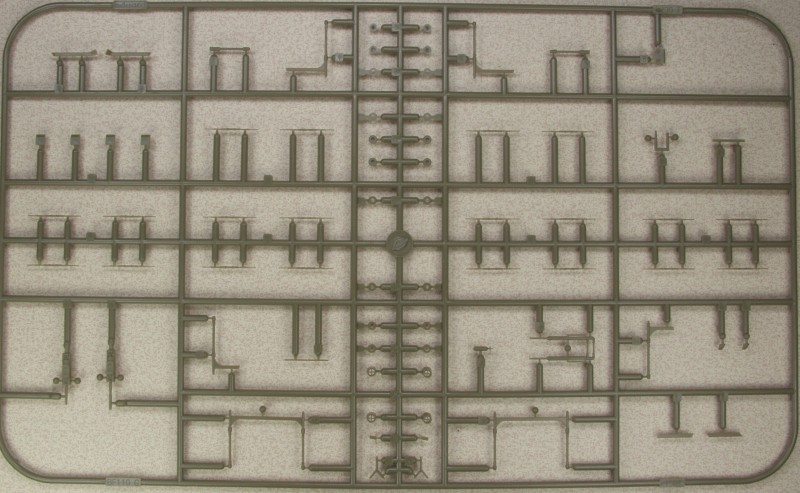
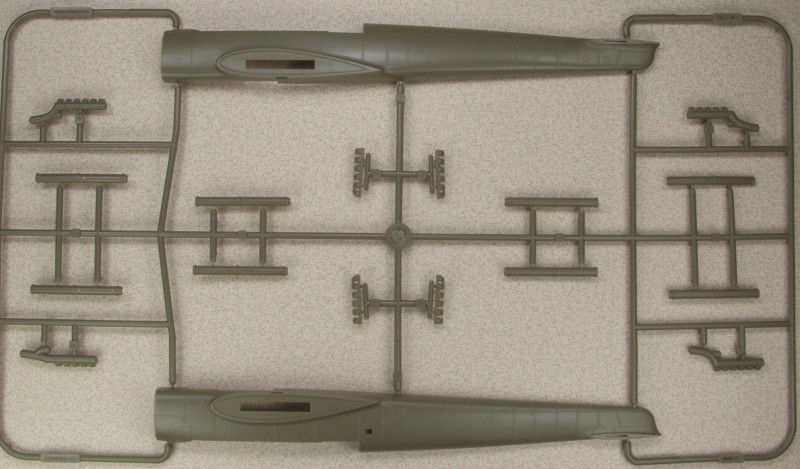
Unusual for a Weekend edition kit is a small fret of photo etch providing parts for the radar antennas and the woven seat for the gunner's position.
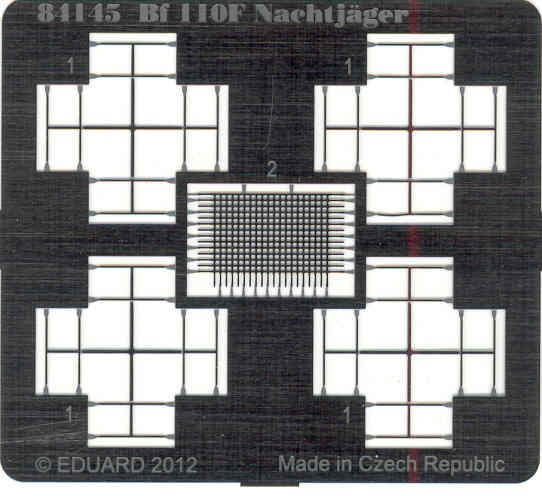
The clear parts are nice and clear and thin with raised frame lines.
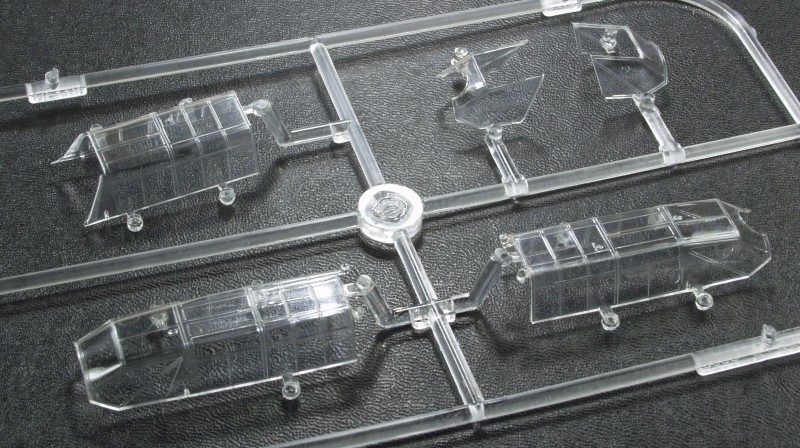
The decals only have Eduard's name on them so I don't know who printed them. They appear thin and are glossy and in register. Since the Weekend edition does not come with any cockpit photo etch, decals are provided for the instrument panel and other panels. Swastikas are provided in both broken and one piece form with marking where the full form versions can be cut off for areas where they are not permitted. The sheet has markings for one aircraft, one of twelve purchased by Romania. Only one carried Romanian markings, that being the one the squadron commander flew. The Romanian markings are not totally correct and more about this and other information can be found on the second in box link below.
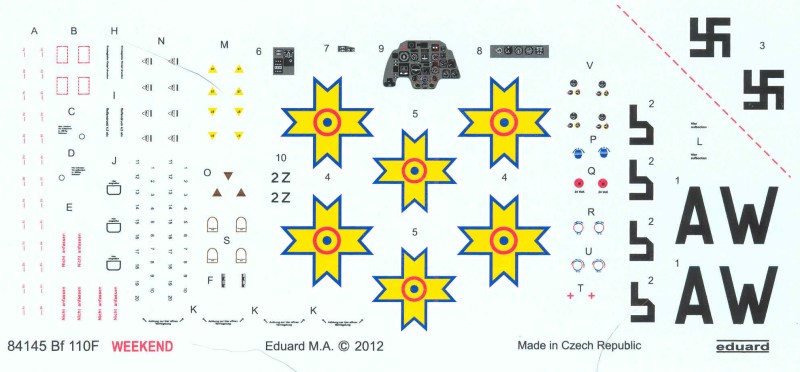
The instructions are a bit lower tech for the Weekend editions, still an A4 sized booklet, this one is printed on plain paper and not stapled at the spine. It has the same basic layout as the G2 and G4 versions reviewed in this section without the history and color. The stencil and marking diagrams are in gray scale instead of full color. Full color diagrams are available on Eduard's website eduard.com. Paint color call outs are Gunze numbers.
After Market Goodies
Eduard didn't do a ProfiPack version of the F variant so if you want some additional photo etch you will need to buy it. Eduard has a set specifically for this kit FE617 shown below.
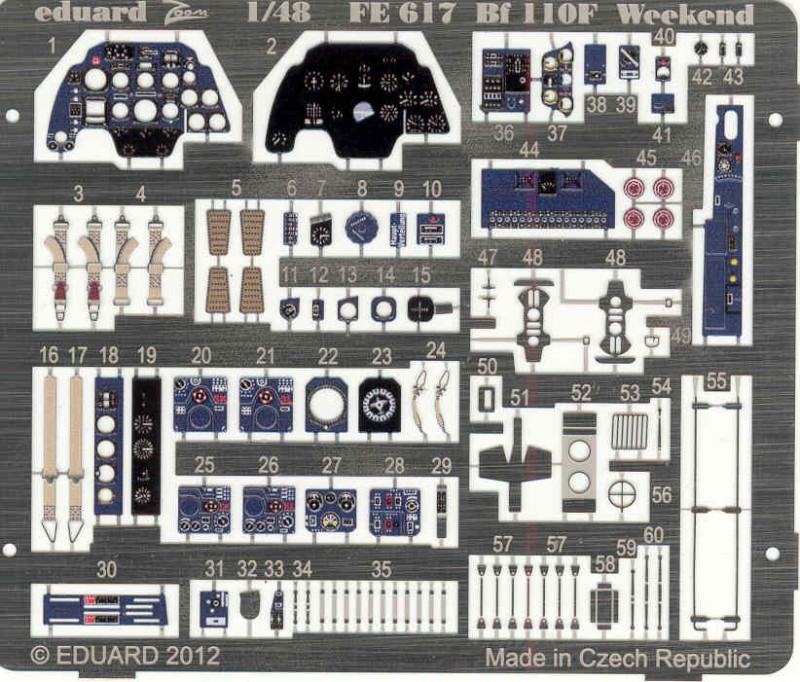
Conclusions
While I doubt very seriously that anyone could build this kit in a weekend, it is an extremely well detailed and molded kit that should produce a beautiful end result. Due to the complexity and known fit issues I would recommend it for experienced modelers only.
Links to kit build or reviews
An in box review can be found here and here.
References
Warplanes of the Third Reich by William Green
Back to the Bf 110 Series Page